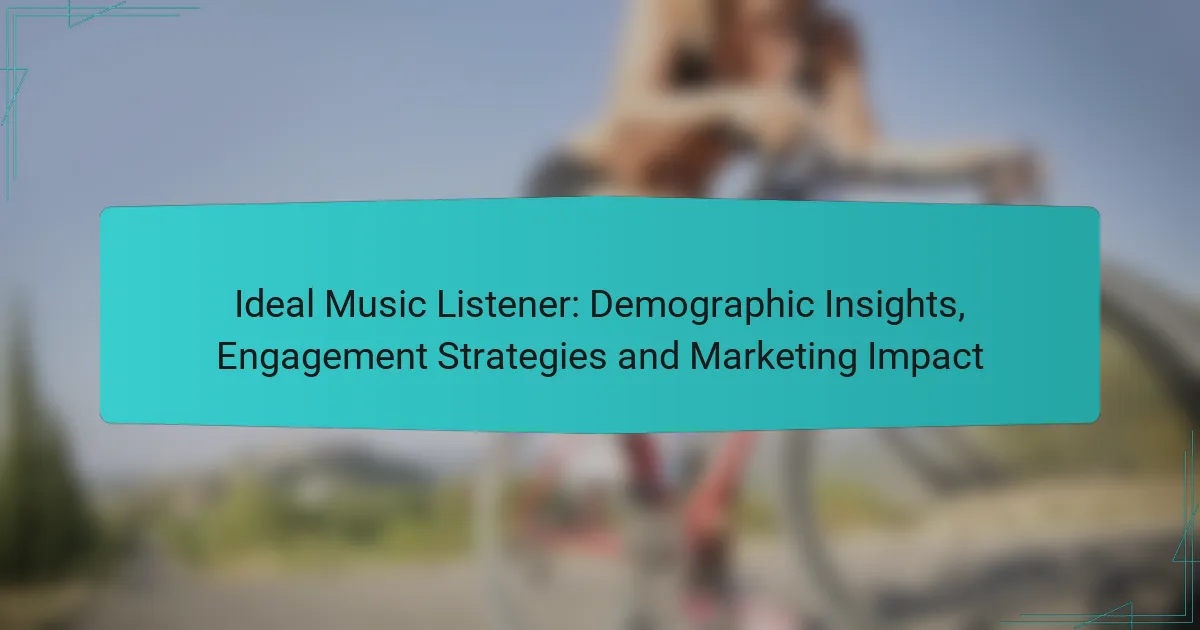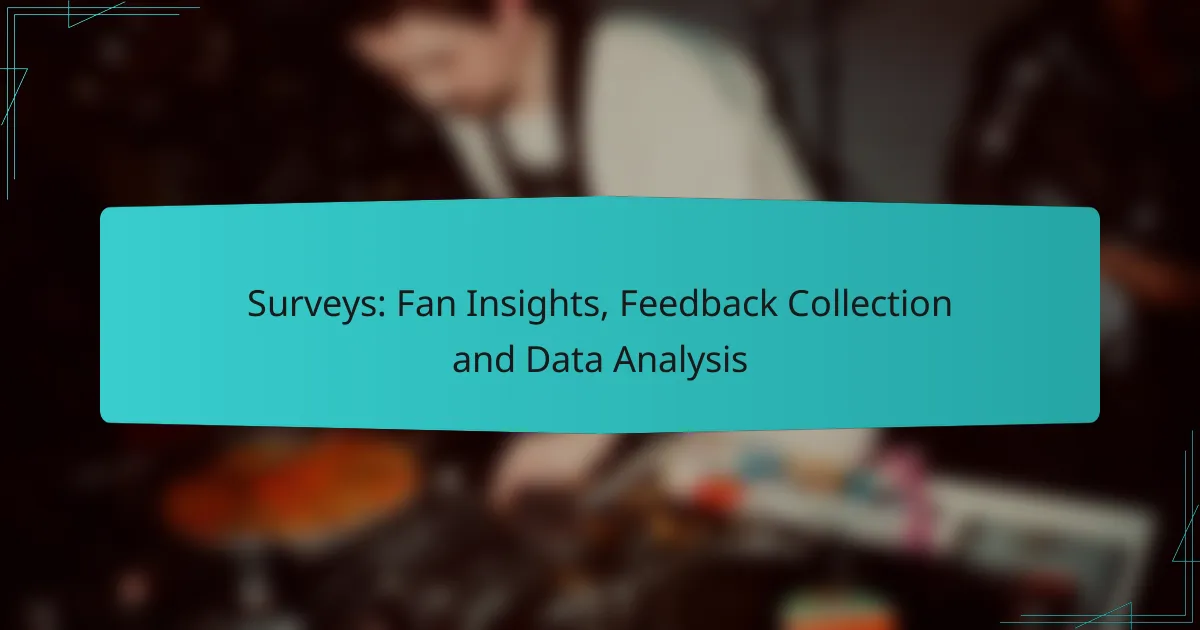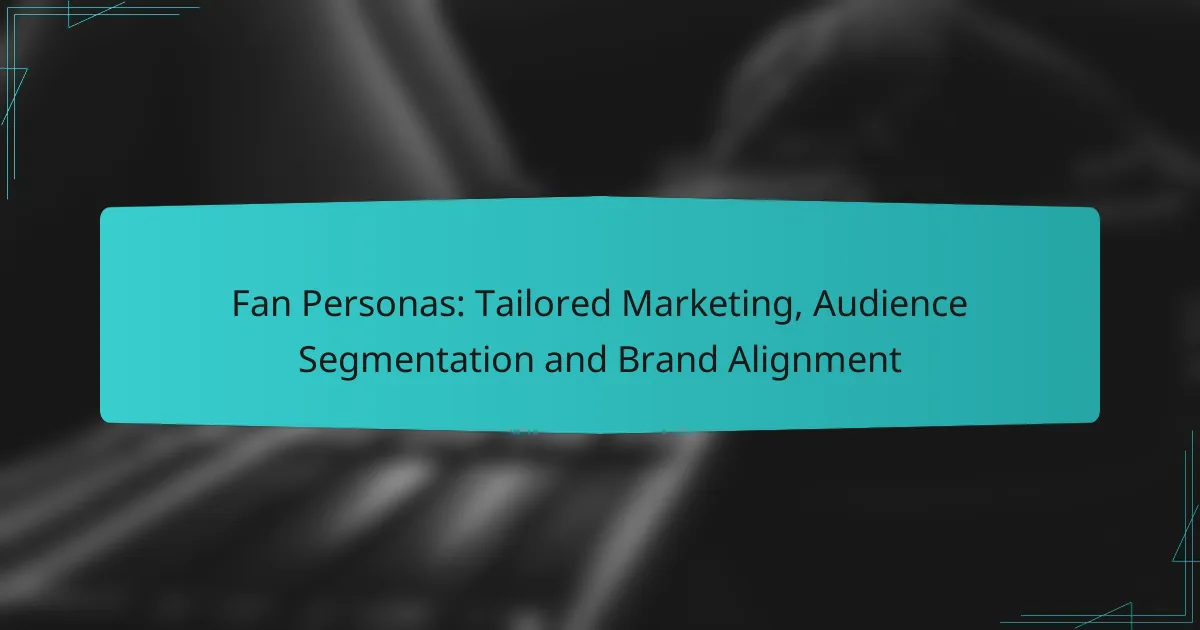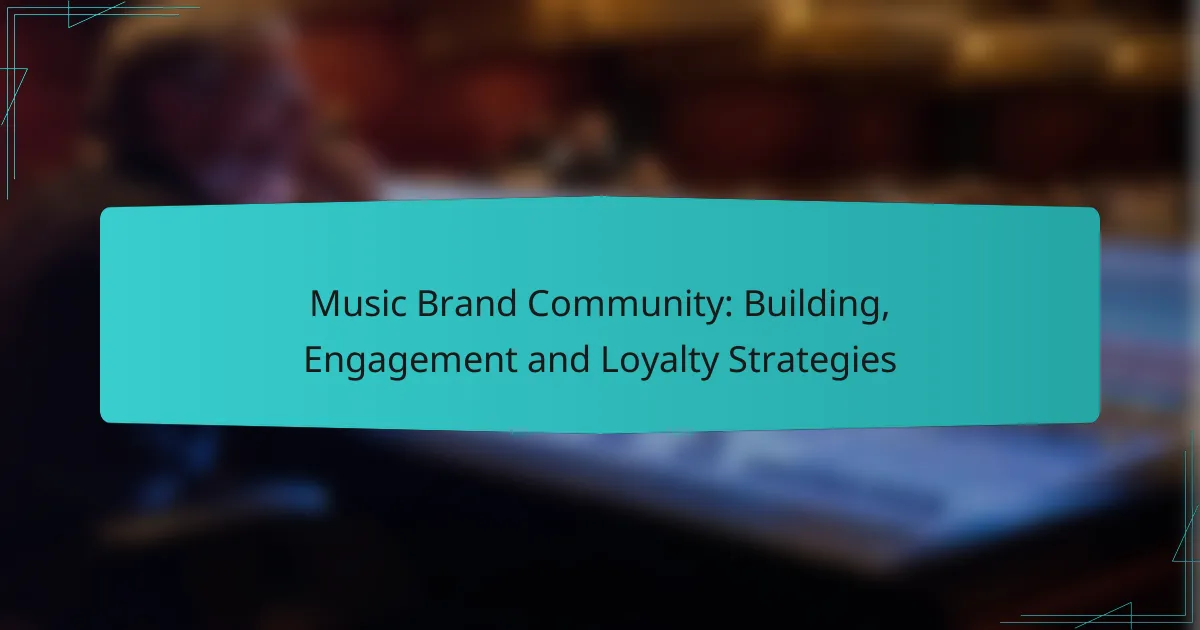The ideal music listeners in the United States are predominantly younger, tech-savvy individuals who engage with music through streaming services and social media. Their diverse tastes and preferences are shaped by digital interactions, making targeted marketing strategies essential for brands aiming to connect with this audience effectively.
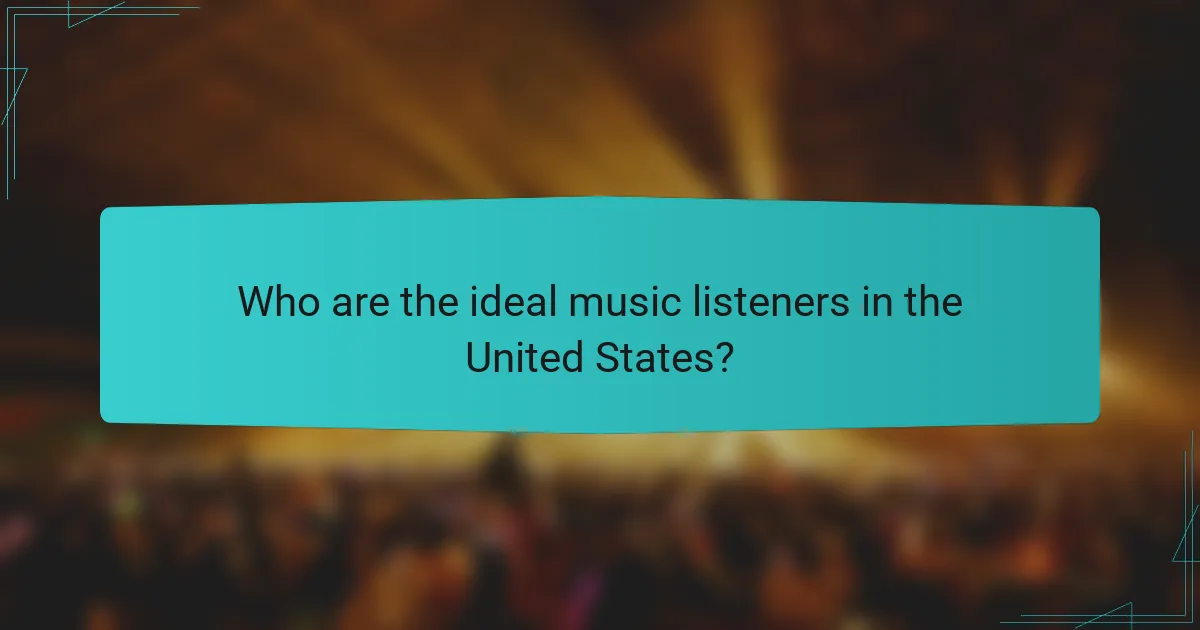
Who are the ideal music listeners in the United States?
The ideal music listeners in the United States are typically younger, tech-savvy individuals who actively engage with music through various platforms. They are characterized by their diverse tastes and preferences, often influenced by social media and streaming services.
Demographic breakdown by age
The age distribution of music listeners in the United States shows a strong preference among younger generations, particularly those aged 18 to 34. This group often seeks new music and engages with artists through social media platforms.
Listeners aged 35 to 54 also represent a significant segment, though their engagement tends to lean towards established genres and artists. Those over 55 are generally less active in music streaming but still enjoy traditional formats like radio and CDs.
Demographic breakdown by gender
Music listening demographics reveal that both men and women are avid consumers, but their preferences can differ. Men often gravitate towards genres like rock and hip-hop, while women are more likely to enjoy pop and country music.
Engagement strategies should consider these differences, tailoring marketing efforts to appeal to the specific tastes of each gender. For instance, promotional campaigns for pop artists may resonate more with female audiences.
Demographic breakdown by income
Income levels significantly influence music consumption patterns. Higher-income individuals tend to spend more on concert tickets and premium streaming services, while those with lower incomes may rely on free platforms and radio.
Understanding these financial dynamics can help marketers create targeted campaigns, offering affordable options for lower-income listeners while promoting exclusive experiences for higher-income fans.
Demographic breakdown by location
Geographically, music preferences vary across the United States. Urban areas typically showcase a broader range of genres due to diverse populations, while rural regions may favor country and classic rock.
Marketers should consider regional trends when developing strategies, such as promoting local artists in specific areas or tailoring playlists to reflect local tastes. This localized approach can enhance listener engagement and loyalty.
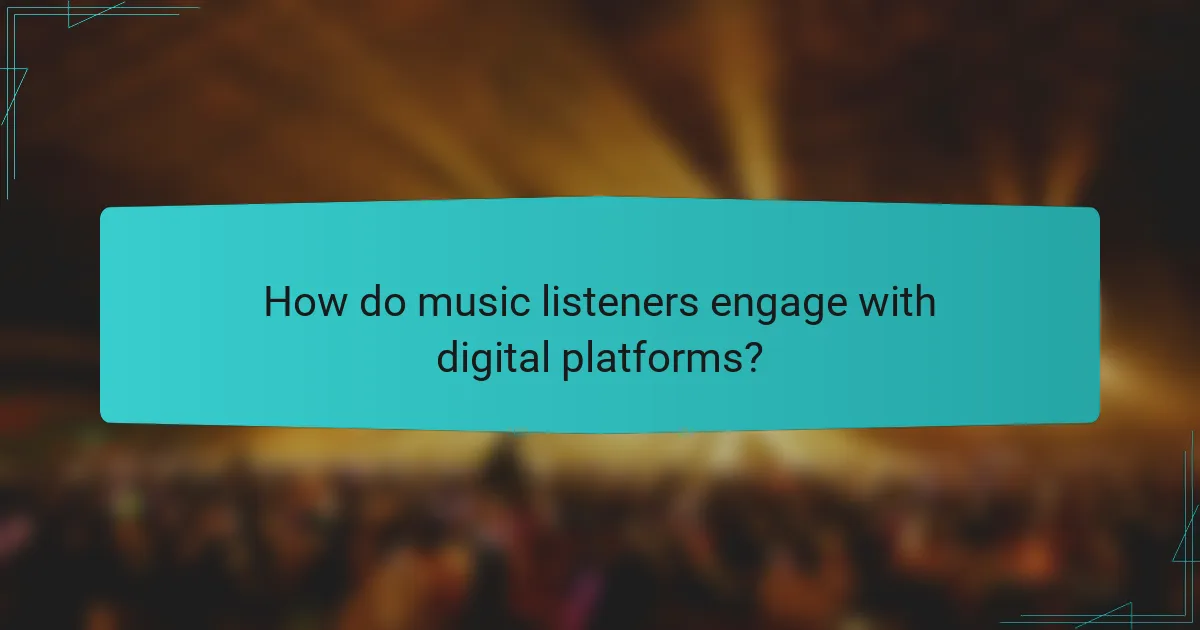
How do music listeners engage with digital platforms?
Music listeners engage with digital platforms primarily through streaming services, social media, and live events. Each of these channels offers unique ways for fans to discover, share, and experience music, influencing their overall engagement and loyalty to artists and brands.
Streaming service usage statistics
Streaming services have become the dominant way for listeners to access music, with millions of users globally. Popular platforms like Spotify, Apple Music, and YouTube Music report user bases in the hundreds of millions, with many listeners streaming music for several hours each week.
Understanding the demographics of these users can help tailor marketing strategies. For example, younger audiences tend to favor platforms like Spotify, while older listeners may gravitate towards services like Apple Music. Brands should consider these trends when developing targeted campaigns.
Social media engagement trends
Social media plays a crucial role in how music listeners interact with artists and their music. Platforms such as Instagram, TikTok, and Twitter allow fans to follow their favorite musicians, share content, and participate in discussions, significantly boosting engagement.
Engagement rates can vary widely, with TikTok often leading in user interaction due to its short-form video format. Artists who leverage social media effectively can create viral moments that drive music streams and concert attendance, making it essential for brands to integrate social strategies into their marketing plans.
Live event attendance rates
Live events remain a vital aspect of music engagement, with attendance rates fluctuating based on location and artist popularity. Major concerts and festivals can attract tens of thousands of attendees, while smaller venues may host hundreds, but both types of events foster a strong sense of community among fans.
Post-pandemic, many regions have seen a resurgence in live event attendance, with fans eager to return to in-person experiences. Brands should consider partnerships with event organizers and artists to enhance visibility and create memorable experiences for attendees, ultimately driving loyalty and engagement.

What marketing strategies effectively reach music listeners?
Effective marketing strategies for reaching music listeners include targeted advertising on platforms like Spotify, influencer partnerships on social media, and email marketing campaigns. Each method leverages specific audience engagement techniques to maximize reach and impact.
Targeted advertising on Spotify
Targeted advertising on Spotify allows marketers to reach specific demographics based on listening habits, location, and preferences. By utilizing Spotify’s data analytics, brands can create tailored ads that resonate with their target audience, increasing the likelihood of engagement.
Consider using audio ads during popular playlists or podcasts that align with your brand’s message. This approach can yield higher conversion rates, as listeners are already in a receptive mood. Aim for a frequency of 3-5 impressions per listener to avoid ad fatigue.
Influencer partnerships on Instagram
Influencer partnerships on Instagram can effectively engage music listeners by leveraging the influencer’s established audience. Collaborating with artists or music influencers who share your brand values can create authentic connections and drive interest in your music or products.
When selecting influencers, consider their engagement rates and audience demographics. Micro-influencers, with followers in the low thousands, often have higher engagement rates compared to larger accounts. A campaign budget of a few hundred to a few thousand dollars can yield significant returns if executed well.
Email marketing campaigns
Email marketing campaigns remain a powerful tool for reaching music listeners directly. By building a subscriber list through sign-ups on your website or social media, you can deliver personalized content, exclusive offers, and updates directly to fans.
Focus on segmenting your email list based on listener preferences and behaviors to enhance engagement. Sending regular newsletters with curated playlists, concert announcements, or merchandise discounts can keep your audience invested. Aim for a consistent schedule, such as bi-weekly or monthly, to maintain interest without overwhelming subscribers.
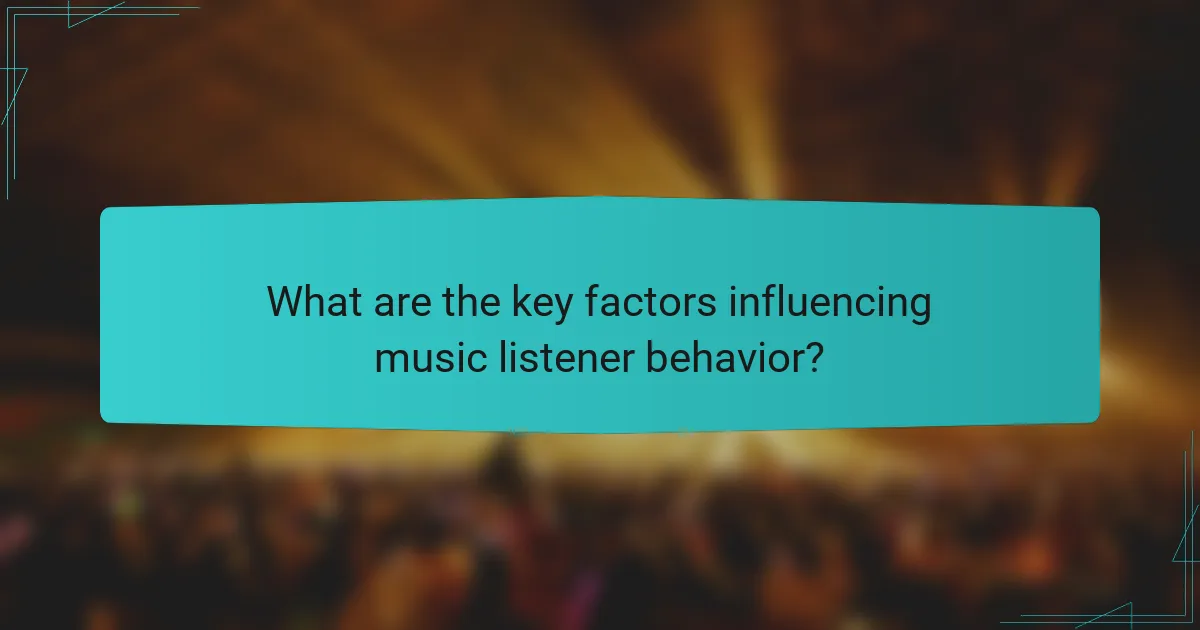
What are the key factors influencing music listener behavior?
Key factors influencing music listener behavior include genre preferences, peer recommendations, and the impact of personalized playlists. Understanding these elements can help marketers tailor their strategies to engage audiences effectively.
Impact of genre preferences
Genre preferences play a significant role in shaping music listener behavior. Different demographics gravitate towards specific genres, which can influence their listening habits and engagement levels. For example, younger audiences may prefer pop and hip-hop, while older listeners might favor classic rock or jazz.
Marketers should consider these preferences when designing campaigns. Tailoring content to align with popular genres among target demographics can enhance listener engagement and drive sales. Utilizing genre-specific playlists can also attract listeners who identify strongly with those musical styles.
Role of peer recommendations
Peer recommendations significantly affect music listener choices. Many individuals rely on friends, family, and social media influencers to discover new music. This word-of-mouth effect can lead to increased streams and downloads for recommended artists or songs.
To leverage this, marketers can encourage sharing through social platforms or create referral programs that reward users for introducing new listeners. Engaging influencers to promote music can also amplify reach and credibility, tapping into their established follower base.
Effect of personalized playlists
Personalized playlists have transformed how listeners engage with music. Services like Spotify and Apple Music use algorithms to curate playlists based on individual listening habits, enhancing user satisfaction and retention. This customization fosters a deeper connection between listeners and the music they enjoy.
Marketers should consider integrating personalized recommendations into their strategies. Creating tailored playlists or utilizing data analytics to understand listener preferences can improve user experience and drive higher engagement rates. Regularly updating these playlists can keep content fresh and maintain listener interest.
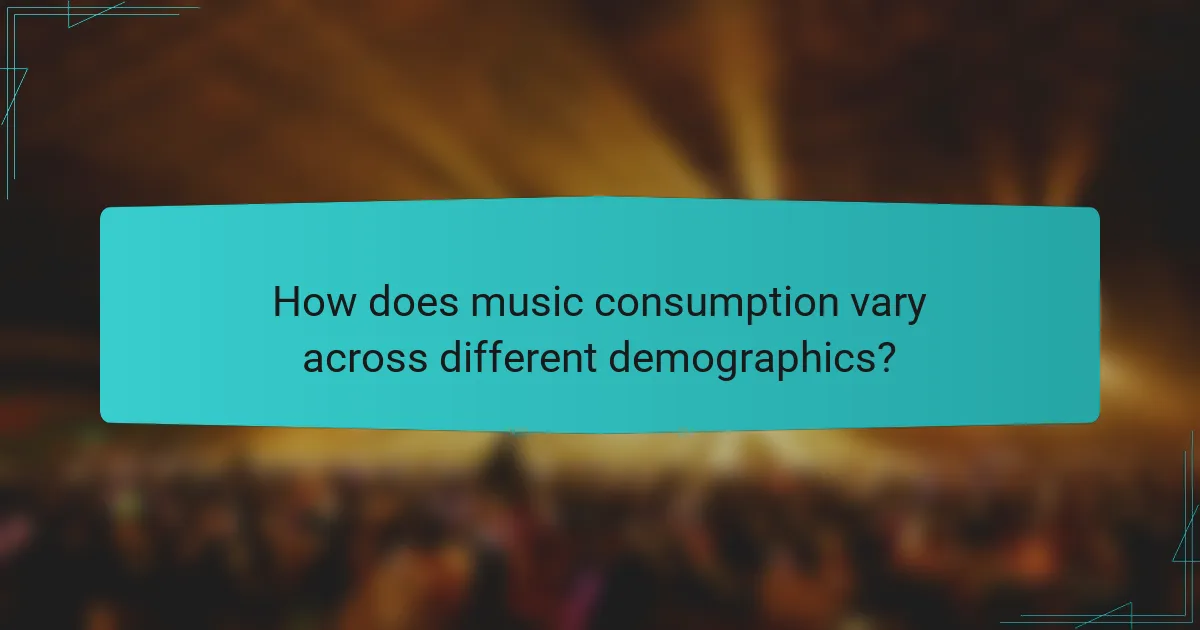
How does music consumption vary across different demographics?
Music consumption varies significantly across demographics, influenced by factors such as age, gender, and cultural background. Understanding these variations helps marketers tailor their strategies to engage specific listener segments effectively.
Age-related listening habits
Age plays a crucial role in shaping listening habits, with younger audiences often gravitating towards streaming platforms, while older generations may prefer traditional radio or digital downloads. For instance, teenagers and young adults frequently explore new genres and artists through apps like Spotify or Apple Music, while those over 40 might stick to familiar playlists or radio stations.
Additionally, the time spent listening to music can differ by age group. Younger listeners may spend several hours daily streaming music, while older listeners might engage for shorter periods, focusing on specific times like commuting or during leisure activities. This trend highlights the importance of creating engaging content that resonates with each age group.
Marketers should consider these age-related habits when developing campaigns. For example, targeting younger audiences with social media ads featuring trending artists can be effective, while older demographics may respond better to email newsletters promoting curated playlists or classic hits. Tailoring strategies based on age can enhance engagement and drive better results.
